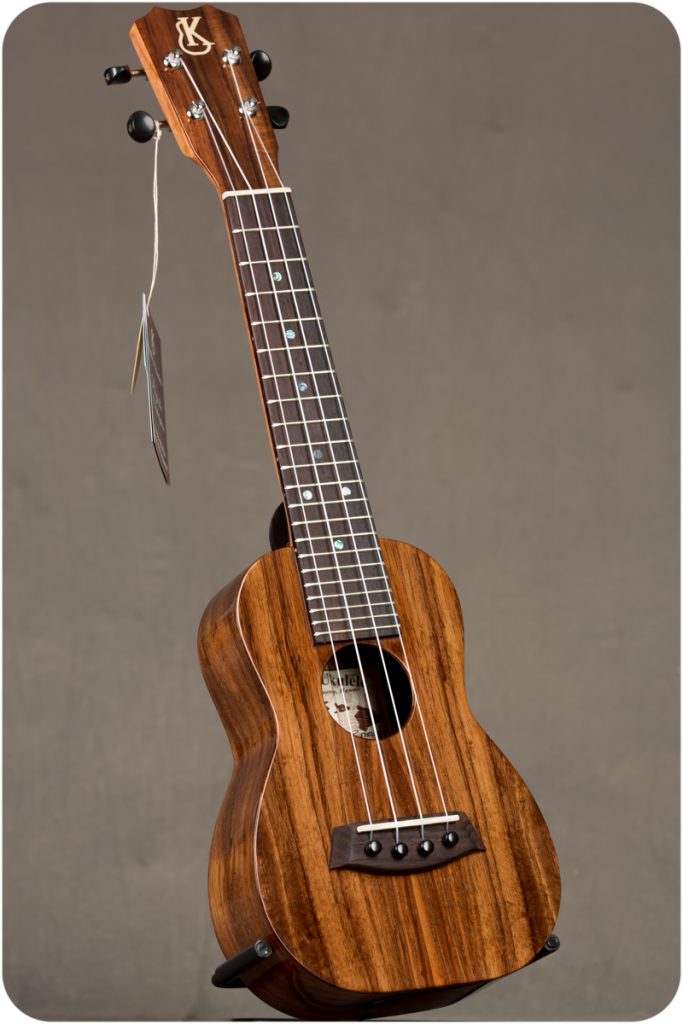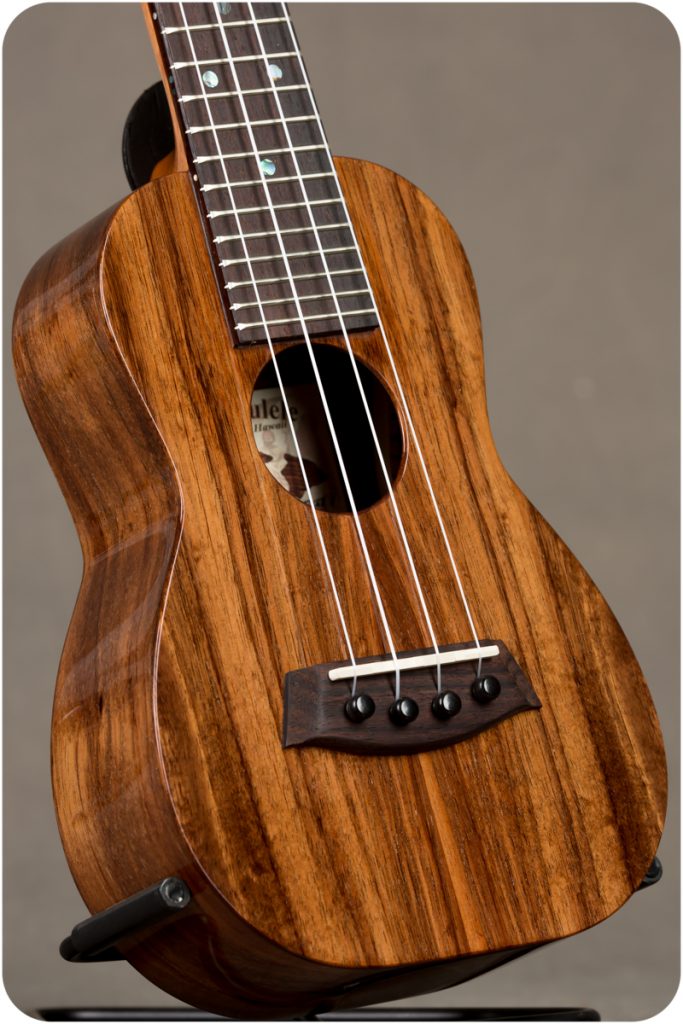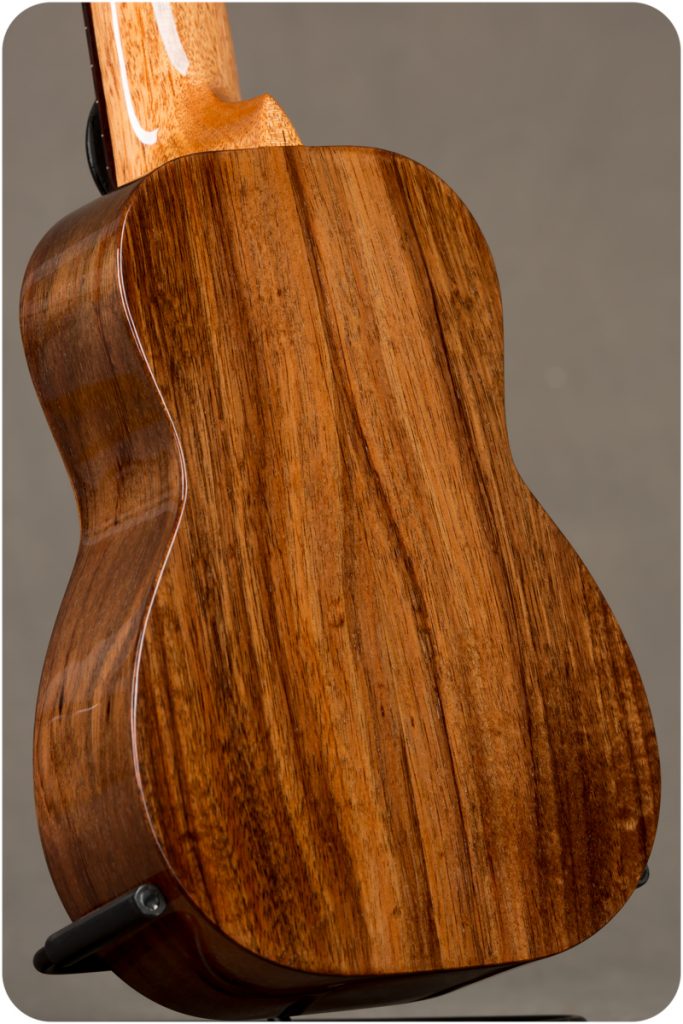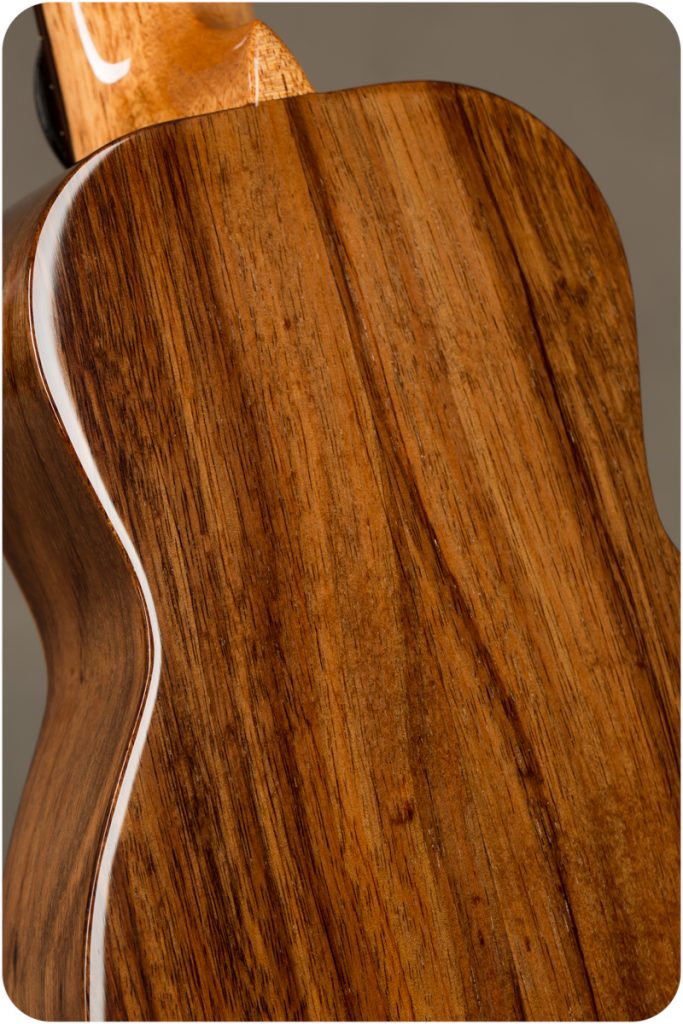They can also do some really impressive custom work at their shop and have been advocates for sound environmentalism ever since I can remember even going so far as to buy plots on the big island to plant and cultivate koa woods – not just for ukulele making (that would be WAY down the road) but because koa trees aren’t as common as you might think and Hawaii is the only place in the world that can grow it so it needs to be protected and used responsibly.
In short, they’re about as Hawaiian as you can get.
This translates to their ukuleles as well because for all the modern features that may make it to their ukuleles from the curved backs to the custom inlays to the unique so-called cutaways – they always have their eyes and their ears on what made the ukulele special in the first place and their ukes reflect it. They have sweet, singing tones, a comfortable feel with thin necks, beautiful koa woods, and an obvious attention to detail. Make no mistake about it: Kanile’a make heirloom instruments to be passed on from generation to generation, all the while sounding better with every hour put into playing it.
I’ve got a spruce-top tenor deluxe model at home and it’s one of my favorite ukuleles that I’ve ever played, so when Andrew asked if I wanted to take home a soprano to review and bring back, the answer was obvious.
It was yes, in case the answer wasn’t as obvious as I had hoped.
Life in general felt better.
Now, I’m not saying that these ukes are magical in the way that they’re guaranteed to make you happy or anything, but just that one decision to play with a lighter touch had a chain reaction that eventually led me to listening to the ukulele’s voice mixed with the wind and just enjoying the day as a whole – not one specific part or another. It was good for the soul.
Beyond acting as medicine at the end of a trying day, the uke is shockingly brilliant in other ways. It’s a K-1 model, which is known to be the bottom rung when it comes to wood figuring, yet the ukulele is unrelentingly beautiful with multiple shades of brown and a gorgeous rosewood inlay on the headstock to match the fretboard. The frets are all polished and level without a single sharp edge to be found and the action is perfect on the low side of medium. It’s easy to play – bordering on effortless – and gives off the very accurate impression that you could sit and play it for hours. The tone is surprisingly deep for a soprano, with a body that’s a bit deeper than you would expect. This does take away some of that highness that is common with soprano ukuleles, but I think it makes the uke more usable and versatile so I’m completely onboard for it.
It does cost more than most soprano ukes – even more than some soprano ukes made in Hawaii, coming in at $855.00 – but I think it’s worth it. You could say that it’s worth it to support a company who is going through the effort to preserve things uniquely Hawaiian like their koa farms, or that you think it’s worth it to support family businesses and you’d be right in both respects, but I just think the ukulele alone is worth it. Kanile’a makes some of the best ukuleles in the world and this one is no exception.
video shows the same model with upgraded premium koa









Comments 1
Beeutiful playing and a rich sound!! Can you help me with some ukulele questions for my 6 year old daughter? She is just starting to play. We’re looking to get her first ukulele. I have done a fair amount of research and I’m glad I found your site!
Thank you.
Sincerely,
Ron